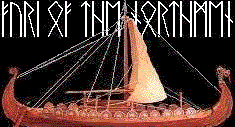Armenia becomes a country
7th century B.C. The Armenian prince, Parouyr, allies himself with the Medes and the Chaldeans in the war against Assyria. After the conquest of the Assyrian capital, Nineveh, the victors appoint him as the Armenian king.
512 B.C. Armenia is mentioned officially for the first time, as a country, in cuneiform belonging to the Persian king, Darius I. Armenia is annexed to Persia.
331 B.C. Alexander the Great attacks Persia and defeats Darius III. However, Armenia is never conquered by the Macedonian army. This results in Armenia freeing itself from Persia and, more or less, regains its independence.
322 B.C. The first Armenian Kingdom is founded by King Yervand I.
215 B.C. After almost an entire century of independence, Armenia looses its sovereignty to the Seleucids for a short period of time.
The Artashisian Dynasty, the First Royal Dynasty of Armenia (190 B.C. - 12 B.C.)
190 B.C. King Artashes I proclaims himself as king of Armenia and becomes the founder of the first Armenian royal dynasty, the Artashisian.
159 B.C. King Artavazd I.
149 B.C. King Tigran I.
123 B.C. King Artavazd II.
105 B.C. Armenia looses the ongoing war against the Persians and King Artavazd II, in accordance to the customs of those days, to surrender his son, Tigran, to the enemy. Tigran grows up at the Persian royal court, which characterized his way of thinking and played a major role during his future ruling.
95 B.C. King Artavazd II dies and is succeeded by his son, Tigran II, also known as Tigran the Great. During the reign of Tigran II, Armenia reaches its height in history and becomes a mighty power. The Roman general Lucullus came to be the only real opponent of Tigran the Great.
Tigran the Great creates Great Armenia
70 B.C. The Armenia of Tigran II reaches its height. His empire stretches from the Caspian Sea in the east to the Mediterranean Sea in south-west and Black Sea in the north-west.
69 B.C. A war brakes out between Rome and Armenia. Lucullus engages in his first war against Tigran II.
68 B.C. Lucullus starts his second war against Armenia.
67 B.C. Pompey's war against Armenia.
56 B.C. Tigran the Great dies in 56 B.C. and is succeeded by his son Artavazd III.
53 B.C. Marcus Antonius attacks Armenia. In collusion with Cleopatra he lures the Armenian king into a trap and murders him.
34 B.C. Alexander, son of Marcus Antonius and Cleopatra, is put on the Armenian throne and rules the country during three years under the protection of the Roman army.
31 B.C. Artashes II, son of the murdered King Artavazd III, comes to power and allies himself with the Persian king Farhad.
20 B.C. The Roman emperor, Augustus, removes Artashes II from the Armenian throne and replaces him with his brother, Tigran III.
12 B.C. Tigran IV becomes king of Armenia. He is the last king in the Artashesian dynasty and dies in 2 B.C.
2 B.C. Caius Caesar sends his stepson, Ariobarzane, as king of Armenia.
11 A.D. Ariobarzane I is succeeded by his son Artavazd V.
17 A.D. Germanicus comes to Armenia in order to crown King Artashes III.






 Reply With Quote
Reply With Quote
Bookmarks